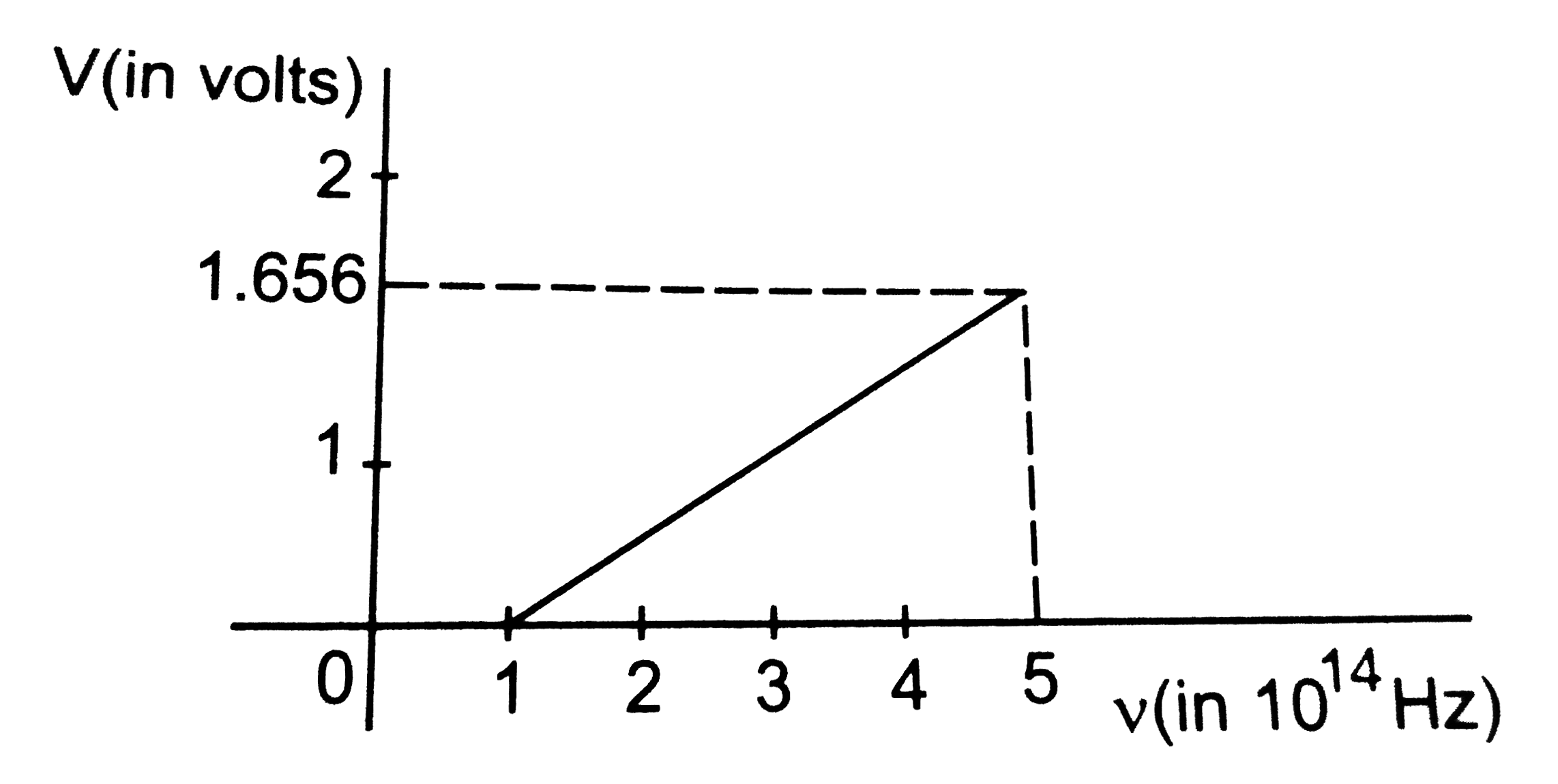The electric field associated with a light wave is given by Find the stopping potential when this light is used in an experiment on photoelectric effect with a metal having work - function 1.9 eV.Solution in Tamil
Given, E = E_0 sin [(1.57 xx 10(7) m ^(-1) ) ( x - ct )] w = 1.57 xx 10^(7) xx c rArr f = 1.57 xx 10^(7) xx 3 xx 10^(8) / 2 pi Hz W_0 = 1.9eV
V_0 = 1.205 xx 1.6 xx 10^(-19) / 1.6 xx 10^(-19) 1.205 V
Topper's Solved these Questions
- BOOK - HC VERMACHAPTER - PHOTO ELECTRIC EFFECT AND WAVE PARTICLE DUALITYEXERCISE - objective II7videos
PHOTO ELECTRIC EFFECT AND WAVE PARTICLE DUALITY
- BOOK - HC VERMACHAPTER - PERMANENT MAGNETSEXERCISE - Exercise25videos
PERMANENT MAGNETS
- BOOK - HC VERMACHAPTER - PHOTOMETRYEXERCISE - All Questions44videos
PHOTOMETRY
Similar Questions
When the intensity of a light source is increased.
04:49View SolutionA long bar magnet has a pole strength of 10Am. Find the magnetic field at a point on the axis of the magnet at a distance of 5cm from the north pole of the magnet.
View SolutionFind the luminous flux of 10 W source of 600 nm. The relative luminosity at 600 nm is 0.6.
01:36View SolutionLight in incident on a metal plate whose work function is 2 eV. Electric field associated with light is given by E=E_(0)sin(omegat-(2pi)/(5xx10^(7))x) { S.I unit} if energy of photom is given by (12375)/(lamda("in"A)) eV then stopping potential is
03:23View SolutionFigure is the plot of the stopping potential versus the frequency of the light used in an experiment on photoelectric effect. Find (a) the ratio h/e and (b) the work function.
 04:23View Solution
04:23View SolutionIn an experiment on photoelectric effect the frequency f of the incident light is plotted against the stopping potential V_(0) . The work function of the metal is given by ( e is the electronic charge)
04:26View SolutionThe electric field associated with a light wave is given by E=E0sin[(1.57×107m−1)(ct−x)]. Find the stopping potential when this light is used in an experiment on a photoelectric effect with the emitter having work function 2.1eV. h=6.62×10−34Js.
02:53View SolutionA non-monochromatic light is used in an experiment on photoelectric effect. The stopping potential
02:43View SolutionThe photoelectric work function for potassium is 2 eV . The light of wavelength 3.6 xx 10^(-7) m falls on potassium . The stopping potential is
03:26View SolutionThe electric field associated with a light wave is given by E=E_0sin [(1.57xx10^7)(x-ct)] (where x and t are in metre and second respectively ). This light is used in an experiment having work function phi=1.9eV. what is the ejected photoelectron ? [ Take pi=3.14, hc = 12400 eVÅ]
03:16View SolutionA non-monochromatic light is used in an experiment on photoelectric effect. The stopping potential
02:41View SolutionFigure is the plot of the stopping potential versus the frequency of the light used in an experiment on photoelectric effect. Find (a) the ratio h/e and (b) the work function.
 03:02View Solution
03:02View SolutionLight in incident on a metal plate whose work function is 2 eV. Electric field associated with light is given by E=E0sin(ωt−2π5×107x){ S.I unit} if energy of photom is given by 12375λ(inA) eV then stopping potential is
08:46View SolutionThe electric field of light wave is given as vec(E )=10^(-3)cos((2pi x)/(5xx10^(-7))-2pixx6xx10^(14)t)hat(x)(N)/(C ) This light falls on a metal plate of work function 2eV. The stopping potential of the photo-electrons is : Given E (in eV) = (12375)/(lambda("in"Å))
04:38View SolutionWhat is the stopping potential when the metal with work function 0.6 eV is illuminated with the light of 2 eV ?
03:26View Solutionएक प्रकाश तरंग से सम्बद्ध विद्युत क्षेत्र को
E=E0sin[(1.57×107)(x−ct)] (जहां x और । क्रमश: मीटर और सेकंड में हैं) द्वारा दिया गया है। ϕ=1.9eV कार्य फलन वाले उत्सर्जक के साथ प्रकाश वैद्युत् प्रभाव के एक प्रयोग में यह प्रकाश उपयोग किया जाता है। उत्सर्जित प्रकाशिक इलेक्ट्रॉन की अधिकतम गतिज ऊर्जा (ev में) क्या है? [π=3.14,hc=12400eVÅ लीजिए]03:55View Solution

